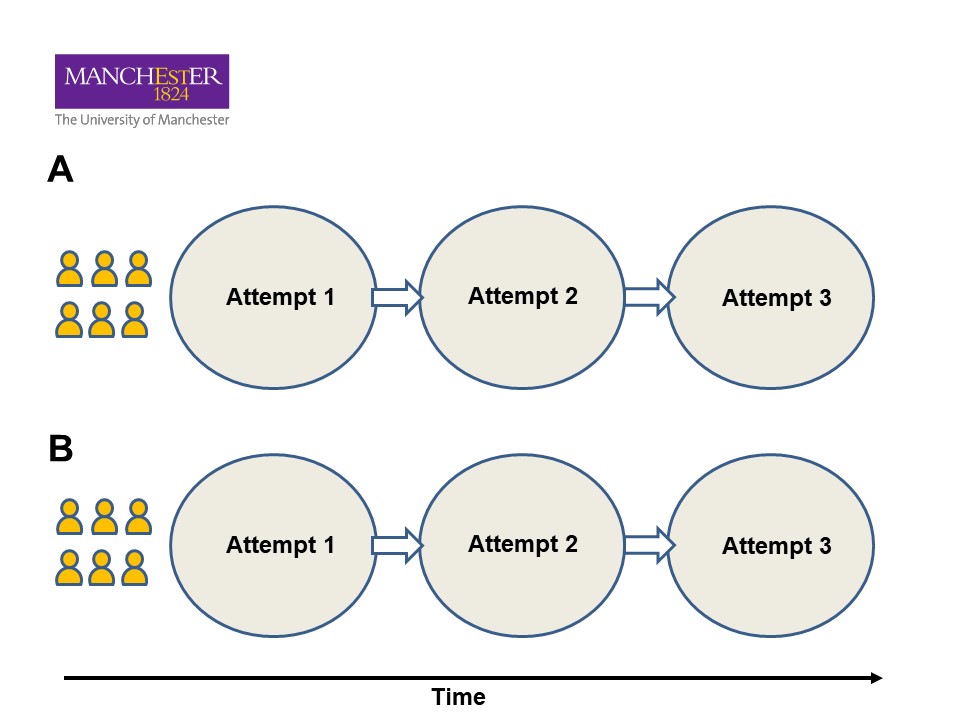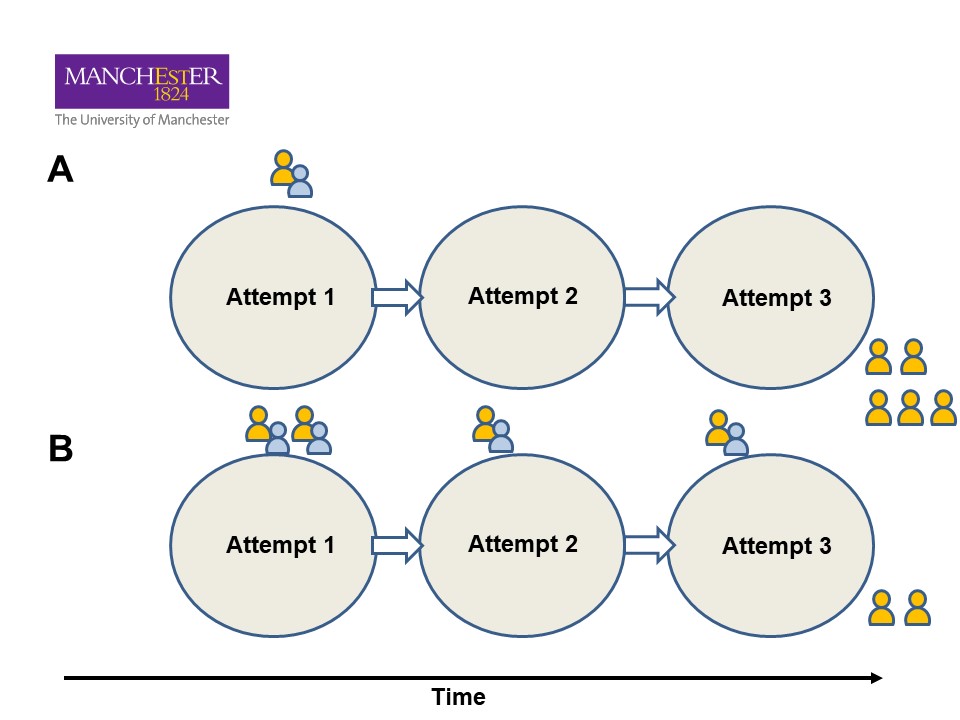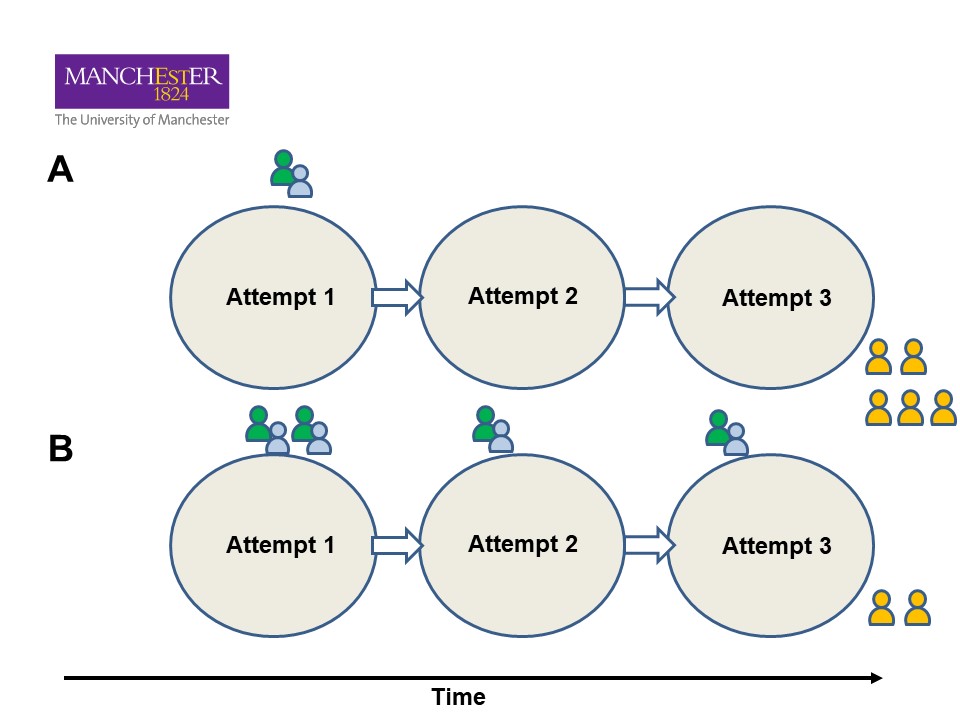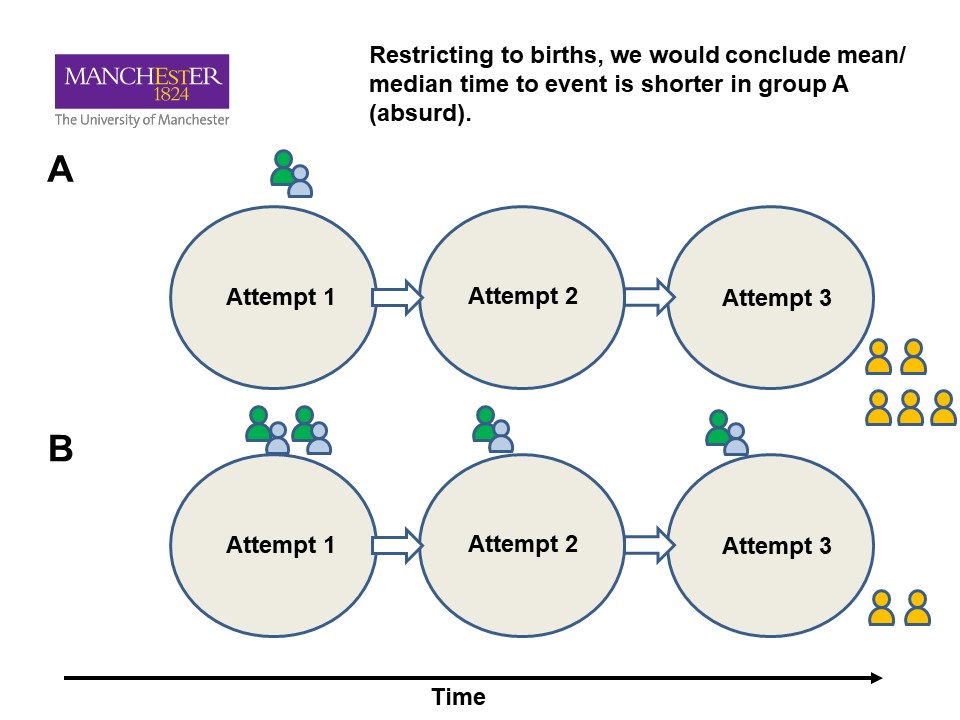Time to (pregnancy leading to) live birth is an important outcome to consider in infertility studies. But it is frequently being analysed in a way that makes inferior treatments look superior. A short visual thread.
Here are two groups of people about to undertake up to three attempts at IVF (say). First group will get treatment A, second group treatment B.
And here's what happens. One live birth in attempt 1 for treatment A. Four live births for treatment B, over the three attempts. Clearly, B is better. More people have live births, and indeed, more have live births in the first attempt. Expect to wait longer (forever?) for in A
A common analysis calculates mean or median time to event including only those who have babies (green). Can you see what happens? Group A will look to have shorter time to event.
Another problem is that, when calculated in this way, time to event depends on how long you follow people up for. Longer follow up = longer time to event. Makes no sense!
This sort of analysis has been used to suggest that PGT-A reduces time to live birth. Who knows, it might - but this analysis definitely doesn't show it.
Good to see interest in time to live birth, but am reviewing various papers where authors think this is how it should be done. It isn't. You're going to need some survival analysis methods to get the right answers.

 Read on Twitter
Read on Twitter





